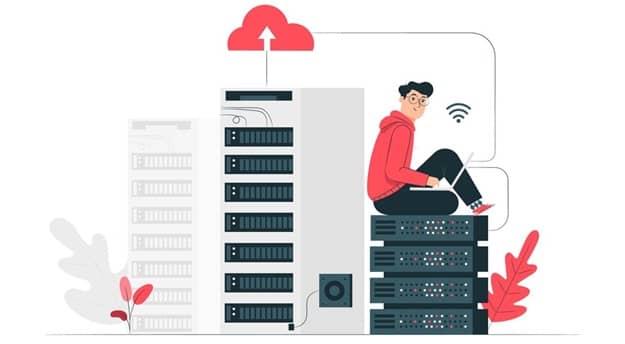The position of the server is critical to how well a website works. When users view a website data moves from their devices to their host computer. How far this data travels can significantly affect how long it takes to load and how the user feels.
It takes longer to send data when the computer is far from the user. This wait could anger people and cause them to leave. Website owners can make better decisions when they know their servers’ locations. By picking the correct server address they can improve their site speed.
Understanding Server Location
Server location is the address of the place where a computer server is kept. It dramatically affects how well the website works because the distance between the person and the computer changes how fast data can be sent. Servers can be in nearby data centers or different parts of the world. Where to put the computer depends on the business needs and the people you want to reach.
A computer nearby can speed up loading times for people in the area. On the other hand global businesses often need more than one computer address so that people worldwide can access them quickly. Knowing where the server is located is essential for improving websites and giving users a better experience.
Latency And Load Times

Latency has a significant effect on how fast a page loads. The time passes between a user request and the server answer. Latency increases when a user is far from the computer because data has to journey farther. High delay can anger users if the site takes too long to load they may leave it. Studies have shown that even minor delays can make people less interested in what you’re doing.
Website owners can choose sites that are closer to their visitors to cut down on delays. Another good option is to use Content Delivery Networks CDNs. CDNs keep copies of a website data in more than one place. When people visit the site they get information from the computer closest to them making load times much faster. These tactics improve users’ experience, get them to stay on your site longer and eventually make it work better.
SEO Implications
The server position is critical in search engine optimization SEO. Search engines care about how users feel and how fast a website load is a big part. Websites that load quickly usually do better in search results and get more traffic. If a website computer is close to the people it wants to reach it can send information faster. This personalized method speeds up loading times and makes users happier making them more likely to stay on the site.
Having a computer in the same area as the target crowd also helps search engines figure out how relevant the site is. Search engines may pick up on the fact that information is designed for a particular area if hosted locally. This can help companies show up higher in local search results providing them an edge over their rivals. Picking the correct server address is essential for improving a website SEO and making it reach as many people as possible.
Content Delivery Networks (CDNs)

Content Delivery Networks (CDNs) are essential for making websites run faster. A content delivery network CDN is a group of computers worldwide that save caches of things like pictures, movies and files from websites. The CDN sends the page information from the computer closest to the user when they ask for it. This cuts down on the distance data travels, speeding up loading times.
There are many reasons to use a CDN. It cuts down on delay which improves the user experience. Because they spread the load across various computers, CDNs also make websites more accessible when traffic is high. They also make websites safer by protecting them from assaults like Distributed Denial of Service DDoS threats. Companies that want to boost speed and give people worldwide a smooth viewing experience must use content delivery networks CDNs.
Best Practices For Optimizing Server Location
1. Identify Your Target Audience
Research where your primary users are and use tools like Google Analytics to learn about places. Knowing where your audience is located will help you pick a server with the slightest delay.
2. Choose The Right Hosting Type
Depending on your needs you can choose between shared VPS and dedicated servers. While shared hosting might save you money, private servers offer more power and speed. A VPS is in the middle with more tools than shared hosting.
3. Consider Local Hosting Options
If your audience is local, pick a server company with data centers close to where your audience is. Local computers cut down on delay and speed up load times. This option makes the user experience a lot better.
4. Utilize Content Delivery Networks (CDNs)
Use a content delivery network CDN to distribute your content across many computers worldwide. CDNs store copies of your page in different places. Users will be able to view your site from the closest computer which will make it load faster.
5. Test Server Speed And Performance
Test your website speed often from different places around the world. Look at load times with tools like Pingdom or GTmetrix. Find the slow spots and make the necessary changes to your server address or hosting service.
6. Stay Compliant With Local Regulations
Find out what data protection rules your audience needs to know about. Ensure the place you choose to host your server follows these rules. Not following the rules can get you in trouble with the law and make your website run less smoothly.
7. Monitor And Adapt Regularly
Continuously monitor the website performance and user feedback. Monitor traffic and change your computer as your audience changes. Stay current on new tools and hosting choices to keep things running smoothly.
Conclusion
The position of the server has a significant effect on how well a website works. It impacts delay load times SEO and following the law. Businesses need to be smart about where they put their servers. They need to know what their community wants. Performance can be improved by using CDNs and following the rules. When you choose the right place for your site users have better experiences. This helps a website be successful in the long run.








